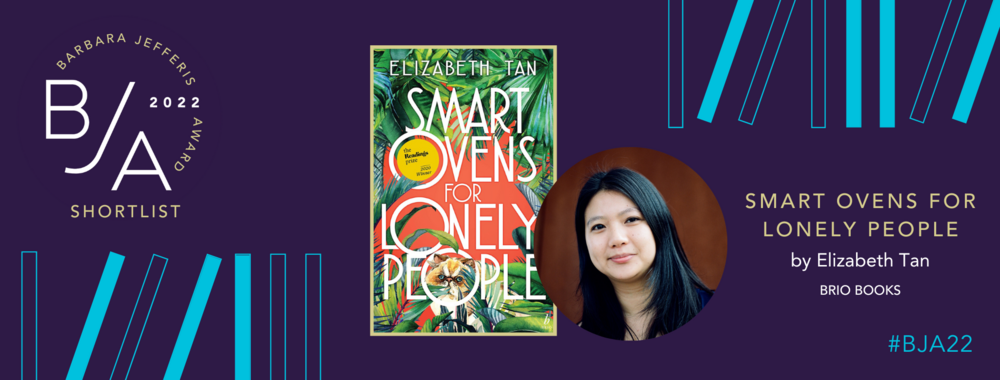23.09.22

How did you start writing?
I was obsessed with fan fiction in my preteen and teen years. I think writing and reading fan fiction instilled in me the sense that writing can be playful and referential, that a work doesn’t have to be completely original from the ground up to be moving or interesting, and that I shouldn’t dismiss the things that give me joy as silly or childish. I went on to study Creative Writing at Curtin University, which opened up a whole other world for me – at the encouragement of my tutors, I started submitting my writing to publications and completed an Honours dissertation and a PhD.
What inspired you to write Smart Ovens for Lonely People?
The stories in Smart Ovens were written over the span of about ten years, so for most of the time I was writing, I didn’t foresee that the stories would become a published collection. Consequently, the stories’ inspirations are very eclectic. They were inspired by playing, by fooling around, by idling on the internet, by smushing incongruent words together, by getting fixated on a phrase or an image that took my fancy. I find that when I set out with the intention of writing something meaningful and profound, I inevitably mess it up. I have to wait for meaning to come, as you might coax a cat out from a hiding place by hovering nearby, doing your own thing, and not looking the cat in the eye.
What was your writing process like for this book – what were the most challenging and enlightening aspects of writing it?
This was very much a little by little, piece by piece collection, where I’d often be motivated to finish a short story in order to enter a writing competition or to meet a journal deadline. Even after I’d signed the contract for the collection with Brio, I was still in that mindset of, ‘Okay, just write another story. Look for your next story.’ It was like hopping across stepping stones, each hop a little act of faith that that the stones were leading somewhere.
When I think about the challenging aspects of this book, I tend to think about the things that were happening in my life that were painful and difficult, the heartache and grief and anxiety and loneliness that live in the cracks of these stories, but nonetheless have given the collection its unity. An enlightening aspect of writing this book was that I discovered that I have the capacity for joy. The last story I wrote for the collection was ‘Ron Swanson’s Stencilled ’Stache’, one of the most ridiculous stories in the collection, a shaggy dog Rube Goldberg machine of a thing. It was the happiest I’d ever been writing in my adult life. I still remember the day that I finished my first draft of the story – stepping out of a café and into the sunshine, hugging my laptop, and thinking that life was so good.
In which ways do you think the protagonists in Smart Ovens for Lonely People represent empowering figures for women and young girls?
I like to think that there are women in these stories – like the mermaids in ‘Our Sleeping Lungs’, the party girls in ‘Happy Smiling Underwear Girls Party’, and even the office workers in ‘Shirt Dresses’ – who choose loyalty to each other, who choose solidarity and love, even though there are forces in their worlds which would rather see them compete with one another, or remain complicit in their roles as pleasurable spectacles, as nice things.
There’s a moment in the titular story of the collection where the lonely protagonist is watching her best friend walk down the aisle, and she reflects that she can be both profoundly happy and profoundly sad in this moment, that she can always be both. Once, when I was at my lowest and saddest, I was having a meeting with my PhD supervisor at uni, and she said the most extraordinary and optimistic thing: ‘But you know that you can always reinvent yourself, Liz.’ I think there are women in Smart Ovens whose worlds are falling apart in various ways, but within that tragedy is the possibility of change, of reinvention. If you ‘can always be both’, if you can be two things, maybe you can be several things.
How do you think literature helps to shape our understanding of ourselves and others?
I think often about the TV series The Good Place and its recurring question of what we owe to each other. I’m wary of putting too much on literature and overembellishing its power, but I think that literature has the potential to prompt the reader – in a subtle, non-didactic way – to contemplate how we live together and how we should (could, must) live together.
What was the most recent book you've read about women or girls that moved you?
I was moved by Grace Chan’s novel Every Version of You, especially by the quiet determination of the protagonist who swims against the tide of her peers. Right now, I’m reading Shirley Marr’s novel A Glasshouse of Stars: it’s the kind of book that catches me between two impulses at the end of a chapter – turn the page immediately, or close the book on my lap for a moment and let all the feelings wash over me.
Elizabeth Tan is a writer and sessional academic who lives in Boorloo/Perth. She is the author of two books: the novel-in-stories Rubik (Brio, 2017) and the short story collection Smart Ovens for Lonely People (Brio, 2020). Smart Ovens was longlisted for the 2021 Stella Prize and the 2021 Colin Roderick Award, shortlisted for the 2021 USQ Steele Rudd Award for a Short Story Collection, and the winner of the 2020 Readings Prize for New Australian Fiction.
Keep up-to-date with ASA advocacy, support and advice
with our fortnightly newsletter.